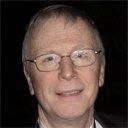My journey as a writer began in 1962, when I left my home in Selma, Alabama, for Harvard University. Here, within months of my arrival, I made a terrible discovery: I had nothing to write about. Worse yet, I suffered an attack of hypochondria so severe, it cast a suffocating pall over my life. To chase down my fear of illness and death, I became a volunteer at Boston City Hospital. In the end, this pursuit led to Stanford University, where I spent eight years as a medical student, intern and resident.
The plan worked better than I had hoped. On the wards, my hypochondria gave me insights seldom available to a non-neurotic physician, while the life-and-death struggles of my patients soon drove my own fears into hidden regions from which they seldom emerge. Years of medical training toughened my hide, but in the end, dazzled by the aesthetic beauty of the human eye, I opted for the rarified world of ophthalmology.
As a professor at the University of Louisville School of Medicine, I fought blinding diseases for thirty years and published ninety articles in scientific journals. At the beginning of this millennium, my old ambition returned, but by now, a thousand triumphs and disasters had given me something to write about. The patients I best remember are those who would not be healed – men and women who fell victim to my ineptitude, or to their own corrosive appetites. Each phase of my life told its own story, leading to a series of fifteen essays published in a variety of literary journals. In addition, Sarabande Books offered my collection the Linda Bruckheimer Award.
Now these essays have been melded into a narrative entitled Spinal Beauty, Pendulous Love, and the Man Who Lived in an Eggcup: A Medical Journey. This narrative gathers momentum as it moves from the foibles of my youth to the more nuanced foibles of my later years. A warning to the faint of heart: much of what I report is gruesome indeed, but it is all true, and for every revolting scene, I conspire with my colleagues and patients to offer up at least one riotous blunder.
My narrative focuses on the emotional rather than the technical aspects of the doctor-patient relationship. Though I read and greatly admire such writers as Jerome Groopman and Atul Gawande, I leave to their skilful hands the task of showing readers the scientific achievements that define modern medicine. They speak eloquently of the damage done by insufficient skill or knowledge, but I would argue that harm often comes from a more treacherous source – the human heart. The passions of doctors and their patients often go awry, bringing tragedies for which science has no remedy.

